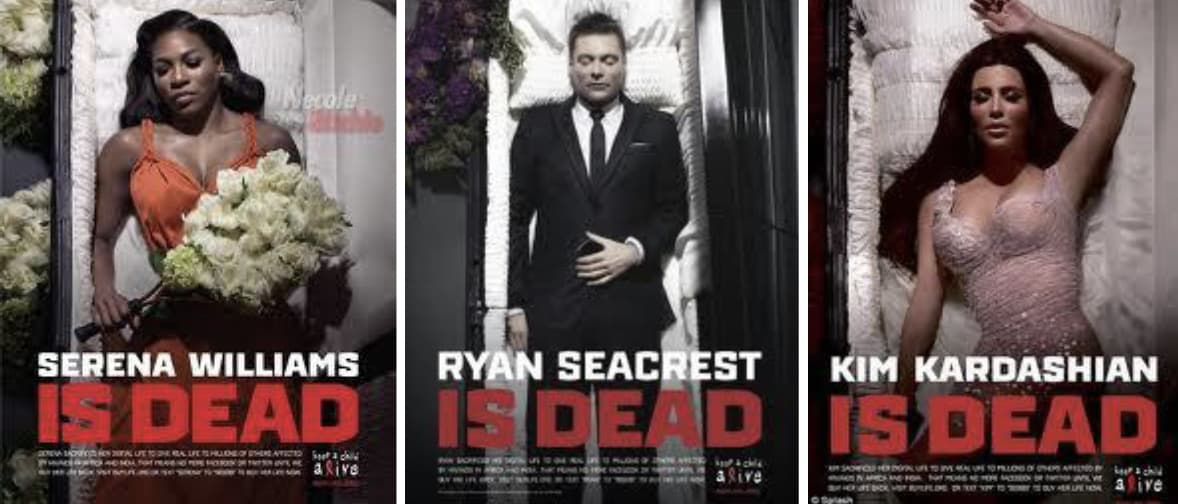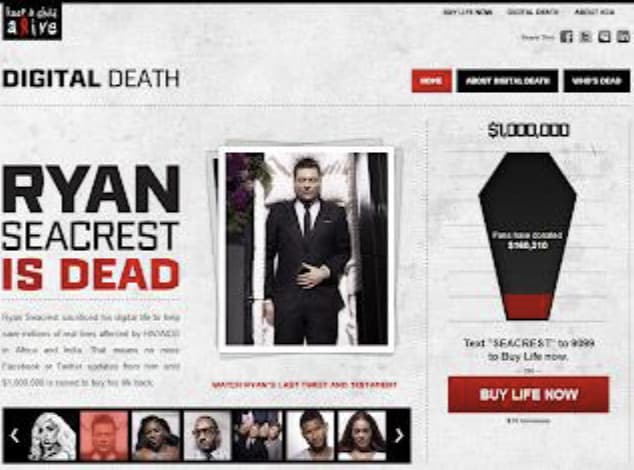We Can Do Better

This fundraising campaign called BuyLife, for the organization calling itself “Keep a Child Alive,” leaves me cold! Everything about it strategically and tactically is just wrong. Wrong! It’s not clever, edgy, ironic. It’s just bad.
A simple breakdown of the campaign: A wide range of celebrity-type people will cease all fan contact (being promoted as a “sacrifice”) through their social networks from December 1, 2010 until $1 million is raised (collectively) for the charity. From the campaign website: How many real lives can be saved by sacrificing a few digital ones? Millions…
Simply stunning!
Fundraising campaigns centered around celebrity are very tricky. These celebrity-driven campaigns will succeed (or not) based upon the public’s affection for the celebrity and the authentic connection between the celebrity and the charity.
As evidenced in this campaign, the public has an incentive NOT to give: These celebrities will be silent until the $1 million dollar goal is reached. To the general public weary of the over-saturated celebrity-driven culture, this is the best money people do not have to give.

Screen cap of the campaign at 10:30 AM, approximately 35 hours after the campaign began, showing $160,310 raised so far
The focus of the campaign is on what the donor willnotget (your favorite celebrity Tweet, for example) and says nothing specific about what the donated dollars will do for the charity and the people the charity serves. Donors do not give when threatened with deprivation (No Tweets for You!), rather donors give when convinced their gifts make a difference by credible organizations and they feel valued for making the gift. Donors don’t want to give to dead celebrities; they want to give to living people with real needs.

The online medium for giving has been grossly underutilized! And most celebrities underutilize the value of their celebrity for good. What would be possible for children with AIDS if these celebrities used the breadth of their virtual social networks and the power of their celebrity to reach their followers with a message stating why they sincerely believe in the cause, why they actively support this particular organization, why they are making a meaningful financial contribution to the charity, and then urgently inviting their fans to participate. How many children will die from AIDS while these “dead” celebrities participate in this empty gimmick?
- Your fundraising campaigns are a reflection of you, your image, your reputation, your creativity, your authenticity, your need, your effectiveness, and your programs. What do your current campaigns say to you about you?
- Celebrity endorsements mean different things to different people. Ultimately, a celebrity lending his/her celebrity as a fundraising tactic is viewed quite differently than a celebrity who actually volunteers and gives money to the charity they endorse. What do your celebrity endorsements say about your organization? For scale, a “celebrity” can be a local visible person of note. Same impact.
- Sometimes our ideas miss the mark. Badly! If you run a campaign (or develop a program, or approve a policy…) that misses the mark, how do you know it? It’s that “yeah, but…” moment that is often ignored: “Yeah, the campaign is good, but…” What do you notice when the “but” is present? What do you do? “But” is usually a warning to check your gut!
We can do better than this!

